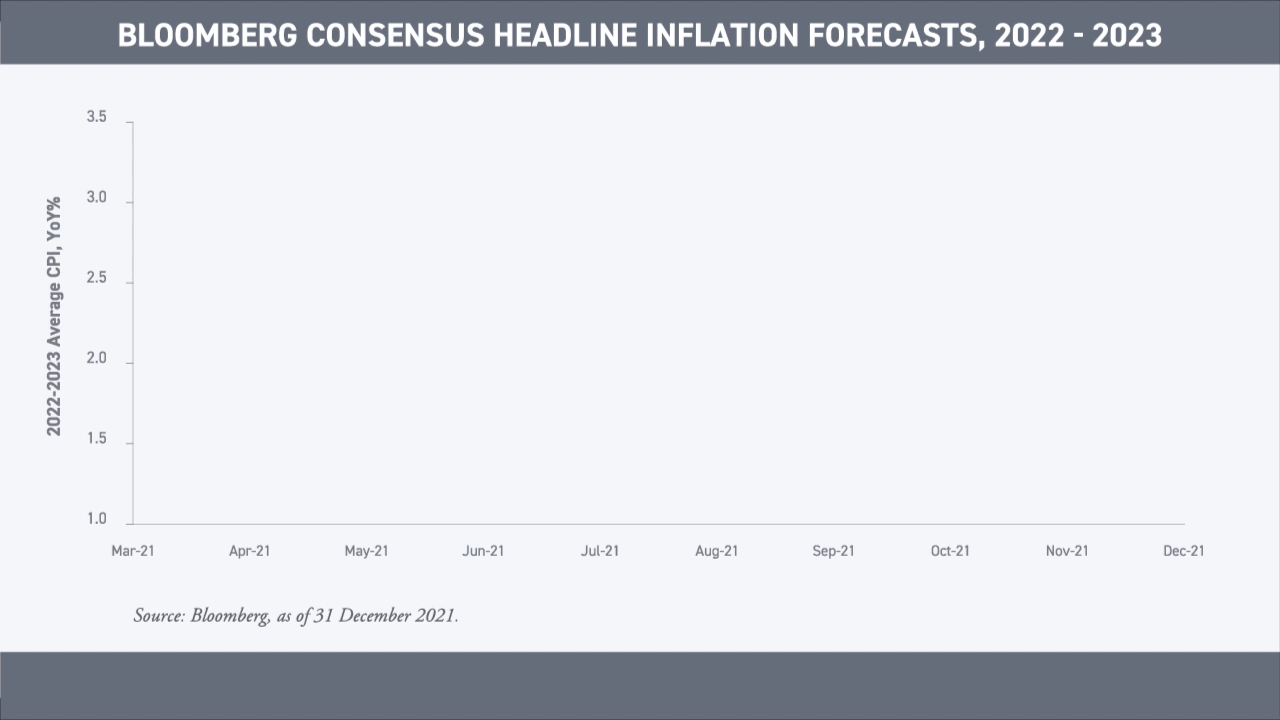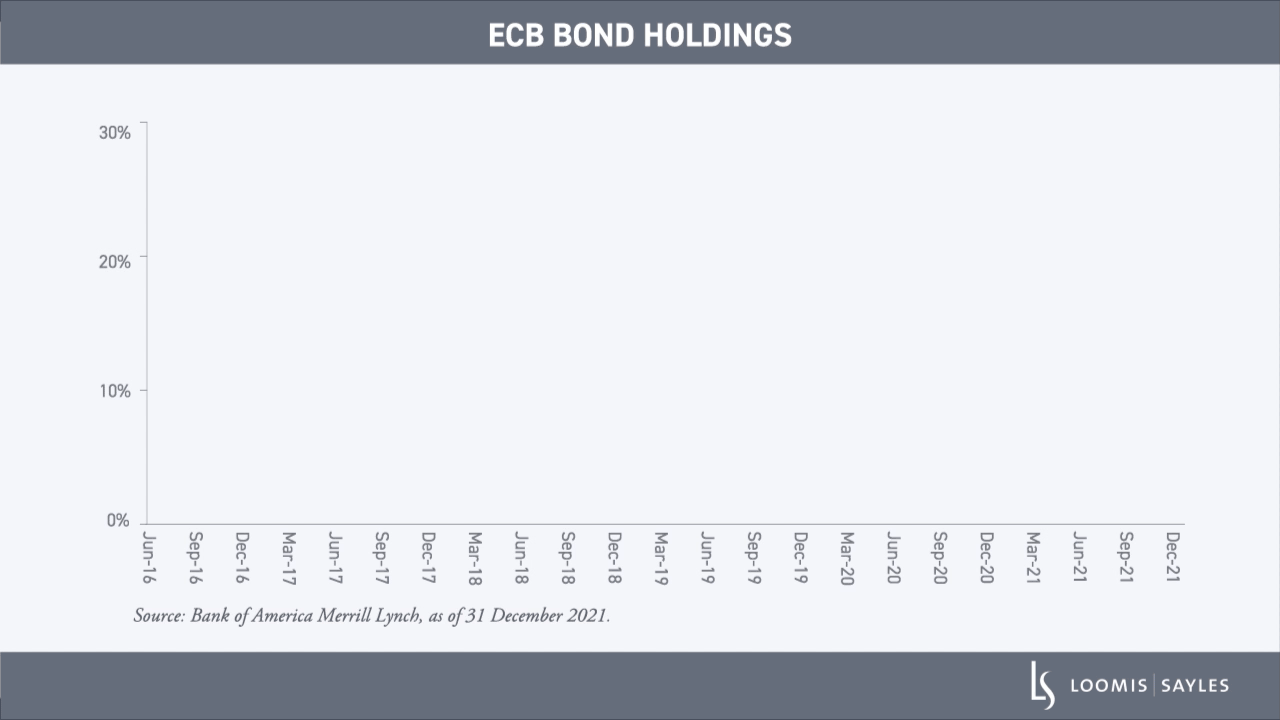1. How could global growth dynamics affect global fixed income markets in 2022?
The global recovery has been somewhat disjointed and asynchronous, and we expect this pattern to continue into 2022. We believe the primary drivers of the asynchronous global recovery will likely remain similar to last year’s: COVID-19, inflation (see chart), supply chain disruptions and China growth fears. However, the removal of stimulus by global central banks could introduce a new dynamic this year. Inflation has surprised to the upside in most places, albeit to varying degrees. As we progress through 2022, we should get more evidence of how persistent inflation is likely to be. This would impact both long-term inflation expectations and central bank reaction functions, in our view. We think the market’s interpretation and subsequent pricing of these factors is likely to lead to volatility across global credit, rates and foreign exchange.

We would view higher volatility across global credit markets as a positive. Credit quality is fundamentally sound and default expectations are quite low. However, we believe that reducing credit exposure could provide investors with dry powder to deploy if and when credit spreads offer more attractive valuations. Presently, we think pockets of opportunity still exist in credit. We believe potential rising stars in the energy and healthcare sectors could offer decent upside, as well as specific global issuers in sectors that are likely to benefit from economic reopening, such as airlines/airports, toll roads, and lodging.
2. The European Central Bank (ECB) has announced that the Pandemic Emergency Purchase Programme (PEPP) will likely end in March 2022. Is this a concern for euro corporate bonds?
In our view, the ECB has likely reached peak accommodation with regard to euro corporates. The central bank now owns more than €350 billion of corporates, amounting to about 10% of the euro investment grade (IG) corporate bond universe and a much higher share of the eligible securities.[i] Both the PEPP and Asset Purchase Programme (APP) have undoubtedly been positive for spreads, as the bond purchases have amounted to approximately half of the market’s net supply over the past year or more. While the potential impact on spreads once PEPP is withdrawn in March remains uncertain, the ECB has stated that it intends to increase both government and corporate bond purchases under the APP for the next couple of quarters and longer if need be. As a result, we do not expect central bank support to wane until there is clear evidence that the economy is on sure footing.

3. Are there any emerging trends or market shifts that you’ll be watching?
In our view, one of the most prevalent emerging trends, primarily across Europe and the UK, is the market’s focus on ESG investing and the significant growth of primary market ESG-labeled issuance. In 2018, ESG-labeled new issuance represented about 5% of total euro IG corporate supply. This number reached almost 25% during 2021, and the UK was not far behind. The United States has some catching up to do, with ESG-labeled issuance only amounting to about 7% of corporate supply in 2021.
We are keeping a close eye on the premium at which ESG-labeled bonds trade versus non-ESG-labeled bonds, as well as the performance dispersion. Currently, ESG-labeled bonds trade at a premium ranging from 5% to 20%; however, the jury remains out on whether securities and/or issuers with favorable ESG credentials will generate excess alpha over the longer term. We believe that over time, valuations will reflect ESG issues, particularly climate change. At present, outside of ESG-related shock events, there does not appear to be a strong correlation between ESG risks/opportunities and bond pricing, but we expect that to evolve over time.
At their core, we believe ESG risks are fundamental to an issuer’s credit quality. If a company fails to recognize and remediate these risk factors, we would anticipate financial deterioration over time. Additionally, the market focus on ESG issues should not be ignored. In our view, as ESG factors gain increasing influence over investor demand, market valuations will adjust to this new norm and force weaker ESG credits to pay a premium to issue in a market with lower demand for their bonds.

[i] Bank of America Merrill Lynch, as of 31 December 2021.
MALR028403
Past performance is no guarantee of future results.






